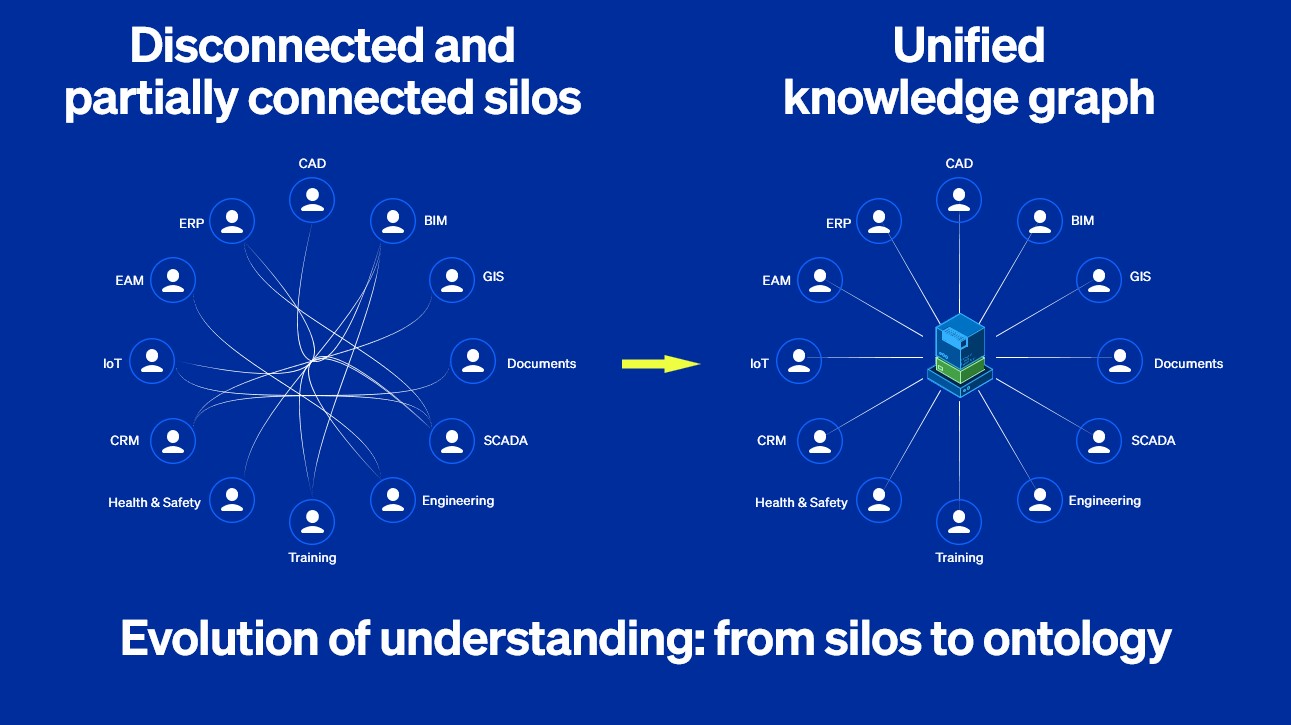
The AI-Ready Ontology: Turning Infrastructure Data into a Living Knowledge Graph

Every infrastructure operator today wants to make data “AI-ready.”
But what does that really mean?
Most organizations still treat AI as something you plug on top of your data – as if algorithms can magically find structure in spreadsheets, CAD files, GIS layers, and sensor streams.
The reality is: if your data isn’t organized around meaning, AI can’t use it.
That’s where ontology comes in.
From Data Storage to Knowledge
Traditional databases – even sophisticated ones – store records.
Ontologies store relationships.
An ontology doesn’t just list that a pump exists; it knows what the pump connects to, what system it belongs to, what work orders reference it, and what sensors monitor it.
That web of meaning transforms raw information into a living knowledge graph – a model that both humans and AI can reason over.
In infrastructure, that means every asset, document, and event is part of a connected context –not a silo.
Why AI Needs Ontology
Large language models and simulation engines aren’t magical; they depend on structured context.
Without ontology, they’re guessing.
An ontology-based knowledge graph gives AI the grounding it needs to answer questions, make predictions, and drive automation.
With ontology, your data becomes:
- Semantic – machines can understand how entities relate.
- Queryable – LLMs and analytics engines can retrieve relevant context.
- Explainable – predictions and actions can be traced back to relationships in the model.
- Composable – simulations can traverse dependencies to test scenarios.
In short: ontology turns static data into an operational memory that AI can actually use.
From Digital Twin to Knowledge Twin
A digital twin shows what exists.
A knowledge twin – built on ontology – shows how and why things behave the way they do.
At Nextspace, we’ve spent decades developing the foundations for that shift.
Our platform unifies engineering (CAD/BIM), geospatial (GIS), operational (IoT, ERP, EAM), and document data into a single, dynamic ontology model.
Every element can be visualized as 2D, 3D, 4D, or schematic –and time-stamped to animate past, present, and future states.
Humans interact visually; AI agents connect through APIs and the Model Context Protocol (MCP).
That’s what we call an AI-ready ontology – the bridge between human understanding and machine reasoning.
Why It Matters
For infrastructure owners and operators, the benefits are measurable:
- Faster AI deployments – no more months of data cleansing before pilots can start.
- Smarter simulations – predictive models draw directly from real-world relationships.
- Better decisions – context-aware insights instead of isolated metrics.
- Longer asset life and higher ROI – because every decision is informed by a connected view of operations.
Ontology doesn’t replace your existing systems.
It connects them into something more valuable – a single, living knowledge graph that feeds humans and AI alike.
The Takeaway
AI doesn’t make your data smart.
Ontology does.
When your infrastructure data lives in a unified, semantic model, it becomes the foundation for every kind of intelligence – human, artificial, and collective.
That’s what it means to be AI-ready.
And that’s what Nextspace was built to deliver.



